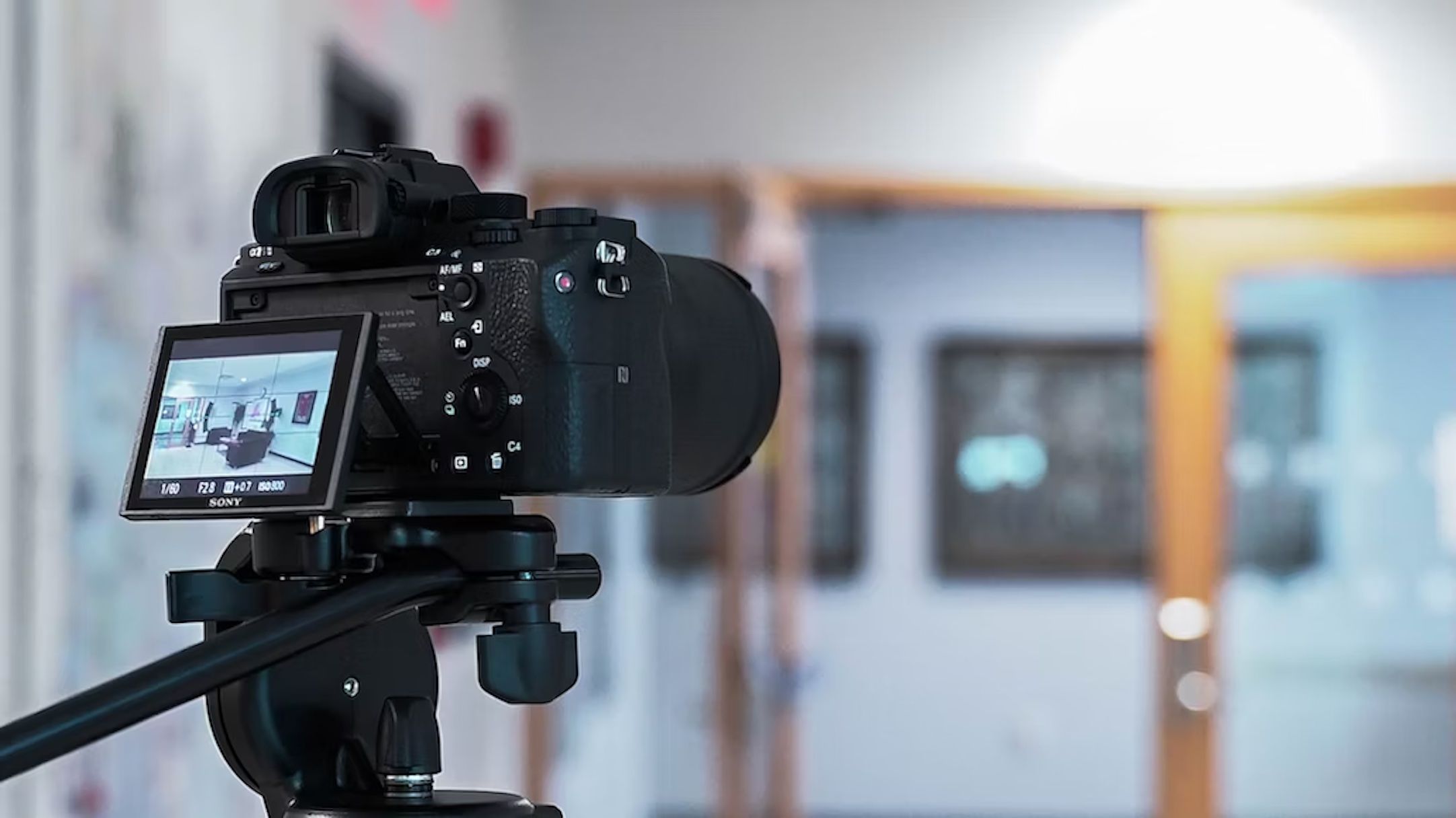How To Record A Zoom Meeting When You're Not The Host

Zoom is popular for allowing users to conduct conferences, meetings, webinars, and sessions virtually on screen. Hosts of any of these virtual activities can automatically record meetings to be made into a video for reference later, but it might be difficult for non-participants who are also interested to have a copy to be able to record.
However, in this article you are about to read, we shall explain how non-participants can also enjoy the privilege of recording a video on the screen.

Seek Permission
Despite the importance of recording meetings for reference, it is important to understand the need to take this step and consider the legal and ethical implications of recording meetings as non-host participants.
Some laws bind the recording of conversations and the use of personal data in each jurisdiction. These laws are designed to protect individuals' privacy and ensure that their personal information is not misused or disclosed without their knowledge and giving consent. Recording a meeting on screen without the consent of all participants may violate these laws, exposing both the person recording and the meeting host to potential legal consequences.
Participants on Zoom or Teams may have a reasonable expectation of privacy during meetings in a professional or corporate setting. Therefore, getting everyone's approval after being informed before recording the meeting is crucial. This entails informing all attendees that the meeting will be filmed and obtaining their consent. The meeting host should make the recording policy explicit at the start of the meeting in scenarios where attendees could join remotely or without being aware that it was being recorded.
The individuals recording meetings on Zoom or Teams should clarify why they are doing it and how they plan to use what they capture. It should be clear if the recording will just be used internally if it will be archived, or if it might be distributed to those outside of the meeting. Participants can choose to give their consent with more knowledge about the recording's scope and purpose.
If approval is given to record the meeting, it is crucial to ensure that the tape is kept secure and that only those with permission can access it. The recording should be safeguarded against unauthorized access and unintentional disclosures because it can contain private or sensitive information.
Update your Zoom Client
Download the most recent Zoom client installed on your device to utilize the Zoom recording feature. Updating your Zoom client is a step that guarantees access to all of the latest features, helps maintain compatibility with other users, and improves security measures. As a result, it's critical to stay current by checking for and installing any available updates frequently.

Enable Recording Permission
The capacity to record events on screen during Zoom or Teams meetings is normally controlled by the meeting host, who can provide recording permissions to participants. Your ability to record as a participant who is not the host depends on whether the host has authorized recording for other participants. If the host has been able to select this feature, a prominent "Record" button will appear at the bottom of your Zoom window while the meeting is in session.
This "Record" button feature is your entry point into the recording procedure. When you click it, the Zoom application begins capturing audio, video, and any shared content from the meeting, resulting in a thorough recording of the whole session. This tool is extremely handy for recording key conversations.
Due to privacy or confidentiality considerations, not all meetings are intended to be recorded, thus, it's crucial to respect the host's choice in this regard. As a result, trying to record a meeting would be incorrect if you don't see the "Record" option because it indicates that the host hasn't allowed attendees to record.
Remember, if you want to record a meeting but don't have the right access, gently ask the host to enable it if it's suitable, ensuring that everyone is aware of and at ease with the recording. Keep in mind that recording virtual meetings is subject to applicable laws, rules, or organizational policies.
Request Recording Permission
There is a correct approach to request permission to record the proceedings on screen when attending a virtual meeting or conference on Zoom or Teams where the host has not initially granted recording capabilities for attendees. You can use the "Raise Hand" feature found on the majority of virtual conference platforms to make this request. With the ability to record meetings, this function alerts the host that you have a query or request.
By electronically raising your hand or pressing the designated button, you may let the host know you want to speak to them while ensuring your intention doesn't monopolize the conversation. It is crucial to formally request permission to record the event after the host sees your raised hand and acknowledges your request.
Remember that recording a meeting without permission may breach the participants' privacy and trust. Therefore, it's critical to observe correct etiquette and acquire explicit approval from the host before starting with any recording. You display respect for the host's authority and promote a positive and productive virtual meeting environment for everyone present by using the "Raise Hand" feature option and politely voicing your request.
Use Third-Party Recording Tools
Taking this step can be an alternative solution to be explored when the meeting host does not give recording authorization, but there is a valid and essential reason to record the proceedings. One approach is to select and use third-party recording tools to capture the meeting's content. However, it is critical to use these tools with extreme caution since they may introduce security vulnerabilities or violate the terms and conditions set forth by the meeting host.
Third-party recording tools should not be used lightly and should be carefully considered in light of individual circumstances and requirements. Third-party recording technologies may have access to sensitive data and communications during the meeting, which you should be aware of. As a result, it is critical to select recognized and trustworthy recording solutions to reduce the danger of data breaches or illegal access. If there is a legitimate need to record the meeting, it is critical, to be honest and notify all participants of the recording intention. Providing explicit explanations for the objective of the recording can assist attendance in developing trust and comprehension.
Inform Participants About Recording
After you enable the recording option, you will notice a little but noticeable red indicator in the upper-left corner of your Zoom window. This sensible feature clearly informs all conference attendees that the current session is being recorded. It is critical to emphasize transparency in this manner since it promotes a sense of confidence and respect among all guests while protecting their privacy.
Zoom guarantees that everyone in the virtual gathering knows the recording activity by prominently showing the red indicator. This technique adheres to ethical norms and allows participants to make informed judgments regarding their participation in the meeting. Because we value open and honest communication in our virtual relationships, this visual signal reminds us to use caution during the debate.
Recognizing the sensitivity of recorded content to be on video, the red signal serves as a virtual "gentleman's agreement," confirming the commitment to privacy and confidentiality. Such thoughtful design choices demonstrate Zoom's commitment to building an inclusive and trustworthy platform for remote communication.
The red indicator's inconspicuous yet prominent location in the top-left corner is a well-thought-out decision. Its placement ensures it remains inside participants' peripheral vision, making it less likely to interfere with the meeting's main focus. As a result, this well-designed system allows for seamless and uninterrupted talks while creating an open atmosphere.
Store Recordings Safely
Zoom will create a recording file as a video in the format requested by the host (typically MP4 or M4A) after the meeting. To keep critical information safe, save the recording in a secure area with limited access. If the recording contains sensitive information, take extra precautions to protect it.
Share Recordings Responsibly
Before you share the tape, be sure it doesn't contain any critical or confidential information. If any segments should not be shared, use video editing software to remove them. Consider using secure file-sharing sites or password-protecting the recording to control access.
When it comes to generating correct transcripts and subtitles, Happy Scribe has earned being an excellent time-saving tool for us. After researching several transcribing services, including those that use human transcribers, we determined that Happy Scribe provides a solid basis for building. While human transcription is regarded as the gold standard, it is not without problems, especially when the assigned transcriber is unfamiliar with the subject matter and language utilized in our industry. In such instances, Happy Scribe emerges as a dependable option, ensuring efficiency and competence in transcription and, eventually, assisting us in our endeavors.

André Bastié
Hello! I'm André Bastié, the passionate CEO of HappyScribe, a leading transcription service provider that has revolutionized the way people access and interact with audio and video content. My commitment to developing innovative technology and user-friendly solutions has made HappyScribe a trusted partner for transcription and subtitling needs.
With extensive experience in the field, I've dedicated myself to creating a platform that is accurate, efficient, and accessible for a wide range of users. By incorporating artificial intelligence and natural language processing, I've developed a platform that delivers exceptional transcription accuracy while remaining cost-effective and time-efficient.